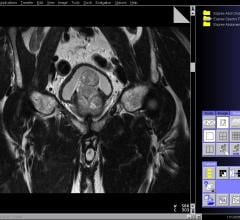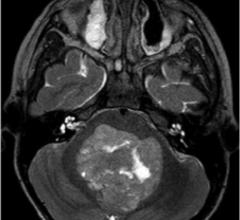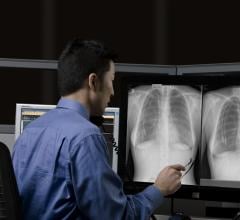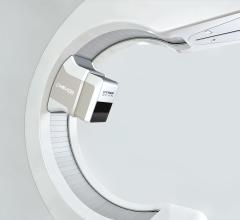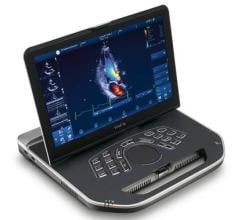Elekta announced that it has expanded its partnership with Radiating Hope, a volunteer organization that provides radiation equipment to resource-constrained countries. The organization also educates medical physics and radiation oncology personnel in those countries to help better serve their patient populations.
In the largest study of its kind to date, researchers have identified and validated three distinct molecular subtypes of prostate cancer that correlate with distant metastasis-free survival. Identifying these subtypes can assist in future research to determine how patients will respond to treatment, according to research presented at the 58th Annual Meeting of the American Society for Radiation Oncology (ASTRO). Findings represent a step toward the implementation of personalized medicine in prostate cancer care.
RaySearch and Mevion Medical Systems are extending their collaboration agreement to support the RayCare oncology information system (OIS), currently in development at RaySearch, and to take full advantage of the advanced treatment capabilities of the Mevion S250i with Hyperscan and Adaptive Aperture. The agreement was announced at the 58th annual meeting of the American Society for Radiation Oncology (ASTRO) in Boston.
Radiology departments have many different needs and face a wide variety of challenges that can impact their departments ...
September 26, 2016 — A new analysis of Veteran’s Affairs Central Cancer Registry records demonstrates a clear positive ...
September 26, 2016 — IBA (Ion Beam Applications S.A.) and Philips announced that they are stepping up their combined ...
September 26, 2016 — For men with intermediate-risk prostate cancer, side effects at two years following radiation ...
Despite decades of progress in breast imaging, one challenge continues to test even the most skilled radiologists ...
Stereotactic radiosurgery (SRS) for brain metastases decreases the likelihood of local recurrence but shows no positive difference in terms of overall survival (OS) or distant brain metastases (DBMs) rates compared to observation alone following surgical resection. These conclusions were drawn from research presented at the 58th Annual Meeting of the American Society for Radiation Oncology (ASTRO).
September 26, 2016 — At the American Society for Radiation Oncology (ASTRO) Annual Meeting, Sept. 25-28 in Boston ...
New research suggests hypofractionated radiation therapy (RT) offers similar results to standard RT in several key areas for stage II and III non-small cell lung cancer (NSCLC) patients who are unable to receive standard treatments of surgery or chemoradiation (CRT). Hypofractionated RT showed similar results in overall survival (OS) and progression-free survival (PFS) rates, limited severe side effects and shorter treatment times.
Bayer Radiology’s Barbara Ruhland and Thom Kinst discuss how radiology departments can address the many different ...
September 23, 2016 — IBA unveiled its new platform, 'Leading the PATh', which gathers the leading experts in the field ...
ZDi Solutions LLC announced that it will soon market its Z-System patient positioning devices to proton therapy and conventional radiation therapy facilities in the United States, with plans to collaborate worldwide. The system is comprised of the Z-Box, Z-Square and Z-Tilt. The team from ZDi will be attending the annual meeting of the American Society for Therapeutic Radiology and Oncology (ASTRO) in Boston Sept. 25-28 to demonstrate the technology.
September 23, 2016 — Three leading national cancer organizations issued a joint clinical practice guideline update for ...
eHealth Saskatchewan plays a vital role in providing IT services to patients, health care providers, and partners such ...
Mevion Medical Systems announced that it will be installing its Mevion S250i proton therapy system at the Zuidoost Nederland Protonen Therapie Centrum, BV (ZON-PTC) in the Netherlands. The system delivers high-quality adaptive intensity modulated proton therapy (IMPT) with Mevion’s Hyperscan pencil beam scanning and Adaptive Aperture technology.
Vision RT announced it will be exhibiting at the American Society for Radiation Oncology (ASTRO) 2016 Annual Meeting Sept. 25-28 in Boston. New data will be released at this meeting from a trial at the National Cancer Institute (NCI)-accredited Lineberger Cancer Center at the University of North Carolina showing zero radiation-induced abnormalities in blood flow to the heart in all patients where Vision RT’s product was used in left breast radiotherapy.
At the 2016 Annual Meeting of the American Society for Radiation Oncology (ASTRO), Sept. 25-28 in Boston, Siemens Healthineers will debuts new hardware and software offerings for imaging for radiation therapy (RT). The new Somatom Confidence RT Pro dedicated computed tomography (CT) scanner is designed to reduce unnecessary workflow steps and features technology that is intended to advance quality care while enabling personalized scans. The scanner features the new version of the company’s optional software syngo.via RT Image Suite, which is designed to help radiation oncology professionals increase efficiency with integrated image assessment, contouring and patient marking in one solution.
Mevion Medical Systems will showcase its pencil beam scanning Hyperscan with Adaptive Aperture at the 2016 American Society for Radiation Oncology (ASTRO) Annual Meeting, Sept. 25-28 in Boston. The advanced proton micro-multileaf collimator (mMLC) technology is integrated into the Mevion S250i with Hyperscan, making pencil beam scanning sharper and faster and delivering robust intensity modulated proton therapy (IMPT).
The TeraMedica Division of Fujifilm Medical Systems U.S.A. Inc. recently announced a significant business milestone in serving cancer center customers. The company’s Synapse VNA (vendor neutral archive), an enterprise-wide medical information and image management solution, is now installed at more than 300 oncology facilities worldwide for the management of cancer treatment data.
September 20, 2016 — A new study by the Harvey L. Neiman Health Policy Institute examines how the incentives in an ...
GE Healthcare announced the global commercial launch of its new generation of high-end portable compact cardiovascular ultrasound, the Vivid iq, at the European Society of Cardiology (ESC) Congress in Rome in August.
Already last century (it feels strange writing that) someone, somewhere realized that laptops had enough horsepower to run simple ultrasound machines. Not long after that transducers were plugged in and … voila! The first consumer-based ultrasound scanner was born.


 September 27, 2016
September 27, 2016 
